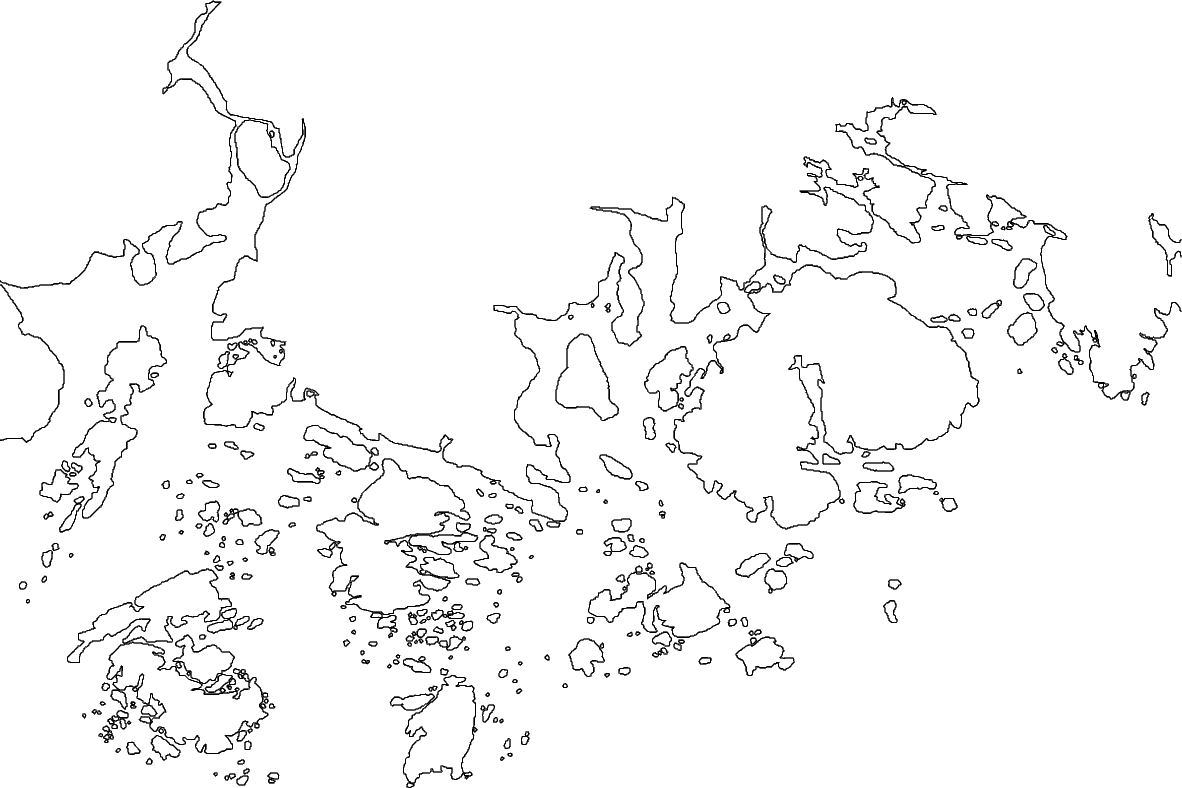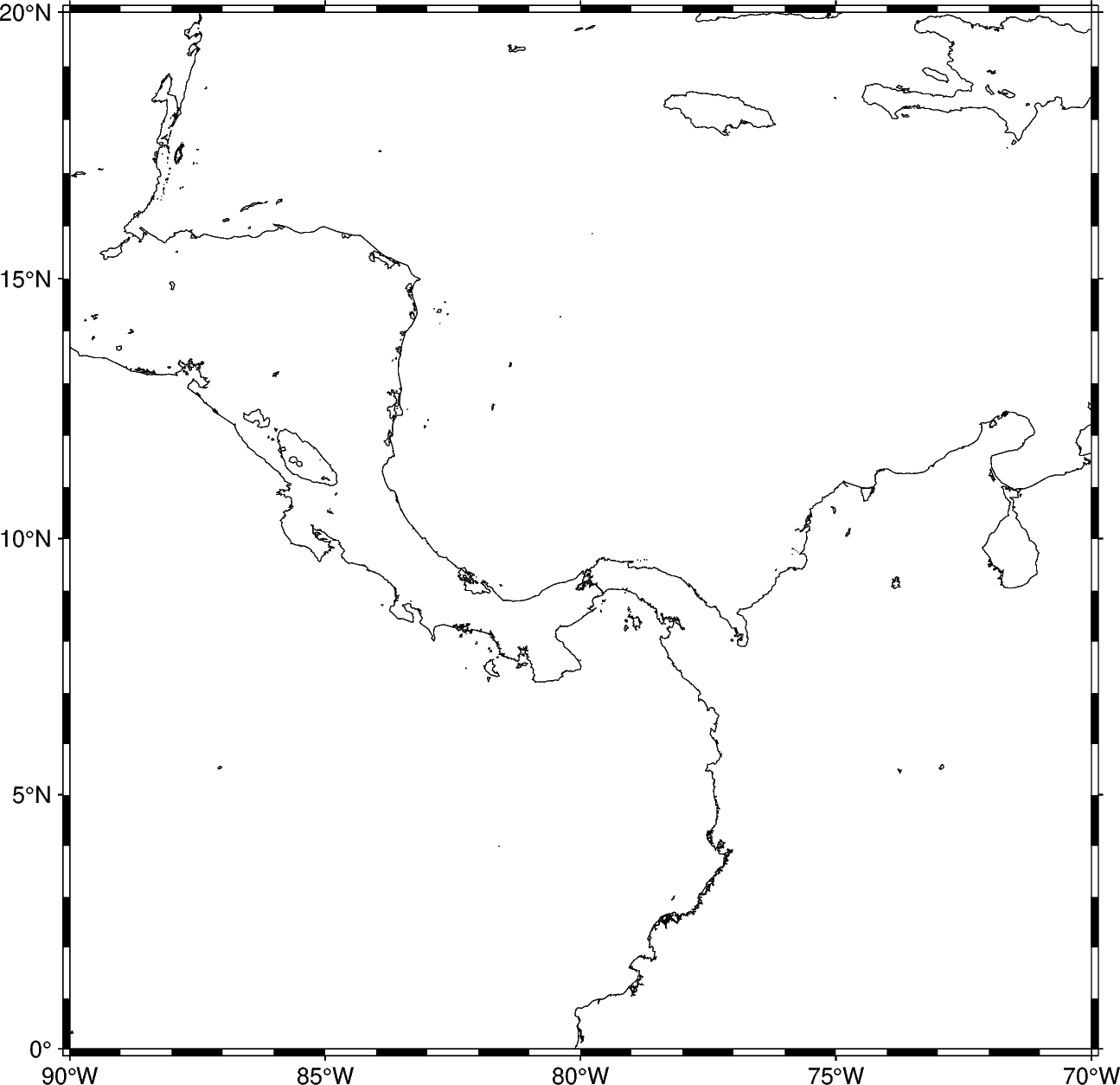Note
Click here to download the full example code
1. Making your first figure
This tutorial page covers the basics of creating a figure. It will only use
the coast module for plotting. Later examples will address other PyGMT
modules.
Setting up the development environment
PyGMT can be used in both a Python script and a notebook environment, such as Jupyter. The tutorial’s recommended method is to use a notebook, and the code will be for a notebook environment. If you use a Python script instead, there will be a difference in how the figure is shown that is explained in the first example.
Loading the library
The first step is to import pygmt. All modules and figure generation is
accessible from the pygmt top level package.
import pygmt
Creating a figure
All figure generation in PyGMT is handled by the pygmt.Figure class.
Start a new figure by creating an instance of this class:
fig = pygmt.Figure()
To add to a plot object (fig in this example), the PyGMT module is used
as a method on the class. This example will use the module coast, which
can be used to create a map without any other modules or external data. The
coast module plots the coastlines, borders, and bodies of water using a
database that is included in GMT.
First, a region for the figure must be selected. This example will plot some
of the coast of Maine in the northeastern US. A Python list can be passed to
the region argument with the minimum and maximum X-values (longitude)
and the minimum and maximum Y-values (latitude). For this example, the
minimum (bottom left) coordinates are N43 W69 and the maximum (top right)
coordinates are N44 W68. Negative values can be passed for latitudes in the
southern hemisphere or longitudes in the western hemisphere.
In addition to the region, a value needs to be passed to coast to tell
it what to plot. In this example, coast will be told to plot the
shorelines by passing the Boolean value True to the shorelines
parameter.
fig.coast(region=[-69, -68, 44, 45], shorelines=True)
To see the figure, call pygmt.Figure.show:
fig.show()

Out:
<IPython.core.display.Image object>
You can also set the map region, projection, and frame type directly in other
methods without calling gmt.Figure.basemap:
fig = pygmt.Figure()
fig.coast(shorelines=True, region=[-90, -70, 0, 20], projection="M15c", frame=True)
fig.show()

Out:
<IPython.core.display.Image object>
Saving figures
Use the method pygmt.Figure.savefig to save your figure to a file.
The figure format is inferred from the extension.
fig.savefig("central-america-shorelines.png")
Note for experienced GMT users
You have probably noticed several things that are different from classic command-line GMT. Many of these changes reflect the new GMT modern execution mode that is part of GMT 6.
As a general rule, the
psprefix has been removed from allps*modules (PyGMT methods). For example, the name of the GMT 5 modulepscoastiscoastin GMT 6 and PyGMT. The exceptions are:psxywhich is nowplot,psxyzwhich is nowplot3d, andpsscalewhich is nowcolorbar.More details can be found in the GMT cookbook introduction to modern mode.
A few are PyGMT exclusive (like the savefig method).
The PyGMT parameters (called options or arguments in GMT) don’t use the GMT 1-letter syntax (R, J, B, etc). We use longer aliases for these parameters and have some Python exclusive names. The mapping between the GMT parameters and their PyGMT aliases should be straightforward. For some modules, these aliases are still being developed.
Parameters like
regioncan takelistsas well as strings like1/2/3/4.If a GMT option has no arguments (like
-Binstead of-Baf), use aTruein Python. An empty string would also be acceptable. For repeated parameters, such as-B+Loleron -Bxaf -By+lm, provide alist:frame=["+Loleron", "xaf", "y+lm"].There is no output redirecting to a PostScript file. The figure is generated in the background and will only be shown or saved when you ask for it.
Total running time of the script: ( 0 minutes 2.324 seconds)